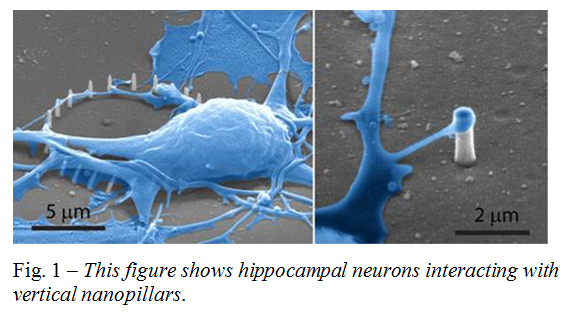Membrane curvature at the nano-bio interface
Bianxiao Cui(Department of Chemistry, Stanford University, Stanford, CA 94305)
时间:2017年6月22日 星期四 下午2:00
地点:图书馆中心会议室

报告简介
The interaction between the cell membrane and the contacting substrate is crucial for many biological applications such as medical implants. We are interested in exploring nanotechnology and novel materials to improve the membrane-surface interactions. Recently, we and other groups show that vertical nanopillars protruding from a flat surface support cell survival and can be used as subcellular sensors to probe biological processes in live cells. Vertical nanopillars deform the plasma membrane inwards and induce membrane curvature when the cell engulfs them, leading to a reduction of the membrane-substrate gap distance. We found that the high membrane curvature induced by vertical nanopillars significantly affects the distribution of curvature-sensitive proteins and stimulates several cellular processes in live cells. Our studies show a strong interplay between biological cells and nano-featured surfaces, which is an essential consideration for future development of interfacing devices.

REFERENCES
1. 1. Zhao W, Hanson L, Lou HY, Akamatsu M, Chowdary P, Santoro F, Marks JR, Grassart A, Drubin DG, Cui Y, Cui B, Nanoscale manipulation of membrane curvature for probing endocytosis in live cells, Nature Nanotechnology, accepted (2017).
2. Hanson L, Zhao W, Lou HY, Lin ZL, Lee SW, Chowdary P, Cui Y, Cui B, Vertical nanopillars for in situ probing of nuclear mechanics in adherent cells, Nature Nanotechnology, 10, 554-562, (2015).
3. Lin ZL, Xie C, Osakada Y, Cui Y, Cui B, Iridium Oxide Nanotube Electrodes for Intracellular Measurement of Action Potentials, Nature Communications, 5, 3206 (2014).
4. Xie C, Lin ZL, Hanson L, Cui Y, Cui B, Intracellular recording of action potentials by nanopillar electroporation, Nature Nanotechnology, 7, 185-190 (2012).
5. Hanson L, Lin ZL, Xie C, Cui Y, Cui B, Characterization of the Cell-Nanopillar Interface by Transmission Electron Microscopy, Nano Letters, 12, 5815-5820 (2012).
人物简介
Bianxiao Cui is an associate professor in the Department of Chemistry at Stanford University, USA, and Stanford Neuroscience Institute.She holds a Ph.D. degree from the University of Chicago and a BS degree from University of Science and Technology of China. She worked as a postdoctoral scholar with Prof. Steven Chu before joining the faculty of Stanford University, Department of Chemistry in 2008. Her main area of interest is to develop nanoscale tools to study electrophysiology and signal transduction in neurons at normal conditions and in neurodegenerative diseases. In particular, she focuses on developing (1) nano-electrodes to detect action potential propagation in neurons and cardiomyocytes and (2) nanoparticle sensors to measure cargo transport in axons. Her recent awards and distinctions include NIH New Innovator Award, NSF CAREER award, NSF Inspire award, Packard Fellowships in Science and Engineering, Hellman Scholar, Searle Scholar Award and Dreyfus New Faculty award.